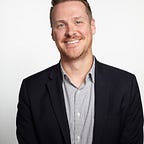Love your organizational problems, not your solutions…
As human beings, we are hardwired to act. Harvard professor Daniel Gilbert argues that humans are exquisitely adapted to respond to immediate problems, such as terrorism, but not so good at more probable, but distant dangers, such as global warming. As a leader, you are continually faced with immediate problems that seem to demand action. These often take time away from consideration of more strategic issues.
Organizational distant dangers take many forms. On the one hand, we put off dealing with issues that are important but not urgent because dealing with the inevitable power struggle is just too hard. A common example is an executive team that delays setting clear investment priorities. Or a team that doesn’t take the time to thoroughly work through roles and accountabilities across the business, market, and function matrix. On the other hand, we tend to jump to solving what looks urgent, when a slower approach might be better. An example is adopting technological trends in response to the fear of being behind competitors, instead of iteratively testing over time.
The late Elliott Jaques (1989) created a useful framework for designing leadership work in large organizations. One aspect of this multifaceted framework is managerial focus across time. His belief was that the top leadership level of the company should have a decision horizon in years. Executive time together should be focused on making a few, big decisions that would have long-term business impact (acquisitions, new markets, new product lines). Conversely, front-line team leaders should be empowered to make many decisions but with an impact horizon only for the coming weeks or months (staffing, work schedules, project timelines). In other words, the executive team should make fewer, bigger decisions while the front line is enabled to make many, fast decisions — within clear bounds — without having the escalate.
Fewer bigger decisions for executives means more focus on assessment problems in depth. A startup CEO I worked for printed out bumper stickers that said, Love your problems, not your solutions. Problems are the fulcrum for good solutions. Ideas are plentiful, but well-understood problems are rare. We believe that deep understanding of root causes of issues and the implications of options is at the very heart of senior leader work today.
Understanding the problem starts with diagnostics. An organization assessment will help you:
- Define the problems to be solved and their root causes.
- Surface good ideas.
- Identify resistance and differences in perspectives.
- Create shared understanding.
- Start the change management process.
Let’s look a little closer at our first bullet, how we define the problems to be solved. A robust problem statement is not just data, or opinions, or pain points. It is an articulation of the organization arrangements that are creating a system that leads to unproductive behavior and outcomes.
According to Kates, Kesler, and DiMartino effective problem statements are:
- A clear statement of what you are “solving for.”
- Provide insight, not just a replay of symptoms.
- Include strengths and are not all bad news.
- Provide a clear point of view backed by data.
We use the Star Model to ensure our problem identification is holistic and takes a systems view.
We listen to the voice of the organization and identify problem themes. What are we hearing as issues, regardless of the questions we ask? Why are these problems important? How do we know — how is it measured? Who is affected by it? Where does it occur? When does it occur?
Leaders who want to speed decision-making lower in the organization should spend more time aligning on high-impact organizational issues. The solutions will then create the clarity to empower those on the front line. So, we advise:
- Slow down to speed up — spend more time as a leadership team focused on fewer, bigger topics that will have an impact over a longer time horizon.
- Use the STAR model as the basis for a robust organization assessment to find ways to create the clarity that will empower your employees.
- Love your problems, not just your solutions.
Need help with all of this at your organization? Shoot me an email or grab me on Twitter. I’d love to discuss.
